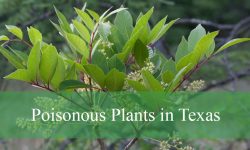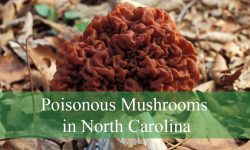Pine cones are fascinating natural structures that come in various shapes and sizes, each serving a unique role in the life cycle of pine trees. When exploring the types of pine cones, it’s important to understand their diversity and purpose.
There are two primary types of pine cones: seed-bearing cones, which protect and release seeds, and pollen cones, which facilitate reproduction. The different types of pine cones can be found across various species of pine trees, each adapted to specific environments.
Understanding the types of pine cones not only helps in identifying species but also provides insight into their ecological functions.
Different Types of Pine Cones
Jack Pine
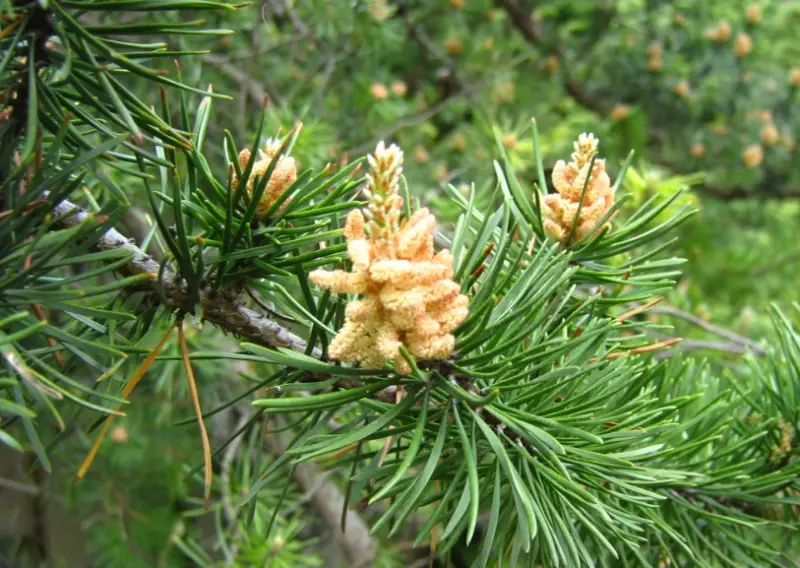
The Jack Pine (Pinus banksiana) is renowned for its uniquely curved cones, which resemble a banana in shape. These cones feature an irregular form with tightly fitting scales and a distinctive purplish bump in the center of each scale. Similar to the Monterey Pine, Jack Pine cones are adapted to open in response to fire, ensuring seed dispersal in burned areas.
Remarkably, the cones can remain on the tree for several years. The Jack Pine is a hardy species, thriving in harsh conditions where other trees struggle. Its trunk is often crooked, and the tree’s overall appearance is scraggly and rugged.
Bristlecone Pine Cone
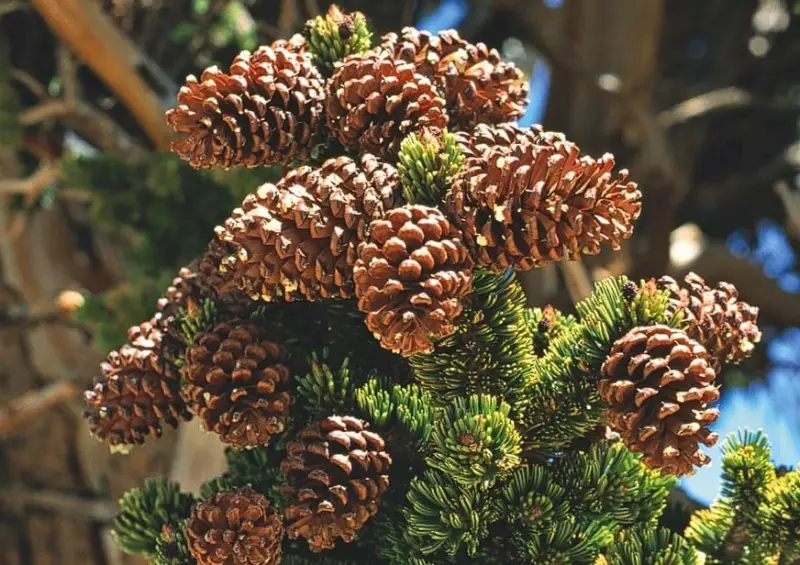
The Bristlecone Pine (Pinus longaeva) is renowned for having the longest lifespan of any known tree species, with some individuals living over 5,000 years—older than the Pyramids! One famous Bristlecone Pine, named Methuselah, is located in Inyo National Park on the Nevada-California border.
Although the pine cones themselves aren’t quite as ancient, they continue the tree’s impressive legacy. The female cones are distinctive for their bristles, which give the tree its name. These features contribute to the Bristlecone Pine’s remarkable reputation and historical significance.
Sugar Pine Cone
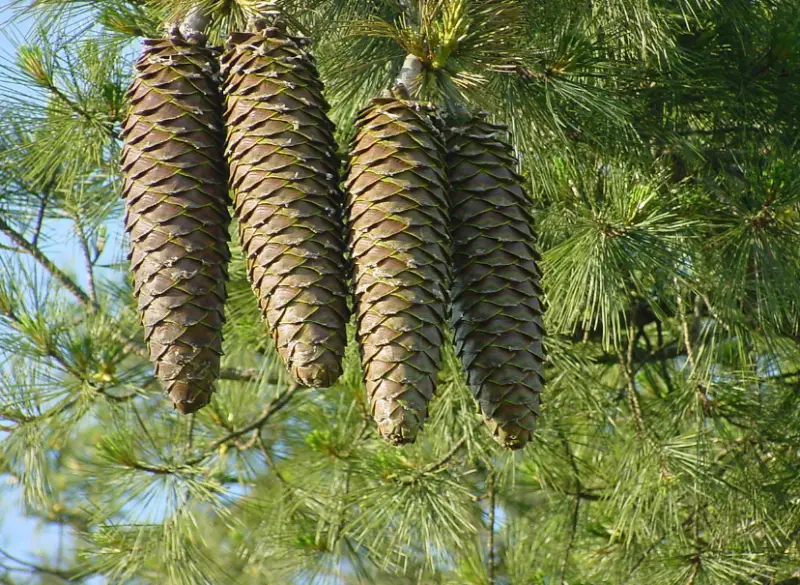
The Sugar Pine (Pinus lambertiana) holds two impressive titles: it produces the longest and sweetest pine cones. These cones can grow up to 50 cm (20 inches) in length, about the size of an adult human’s arm, and typically measure at least 25 cm (9.8 inches). They are also renowned for their sweet sap, which crystallizes on the cones and was traditionally eaten as a treat by Native Americans.
However, raw sap has a mild laxative effect, so it is usually cooked before consumption. Removing the sticky sap from fingers can be quite a task, but it is harmless and can be cleaned with margarine, vegetable oil, or clarified butter.
Siberian Pine
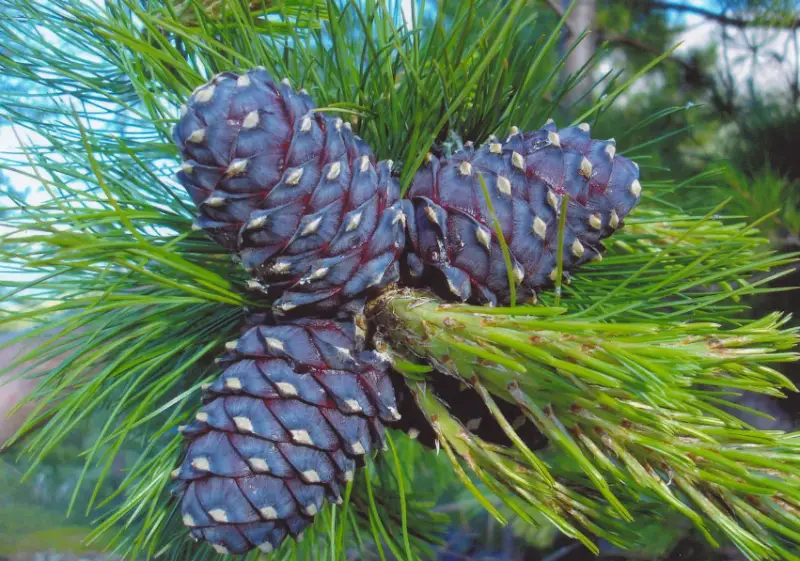
The Siberian Pine (Pinus sibirica) is gaining prominence in the commercial seed market, rivaling the Italian Stone Pine as one of the most popular pine seeds for food globally. The cones are striking with their cool purple color. Unlike many pine seeds dispersed by wind, Siberian Pine seeds are primarily spread by Spotted Nutcracker birds. These seeds also feature a small vestigial wing.
In Russia, they are known as ‘Cedar Nuts.’ The Siberian Pine is notably resilient, able to withstand temperatures as low as minus 60°C and resistant to rust fungus, making it a robust and valuable crop.
Mugo Pine Cone
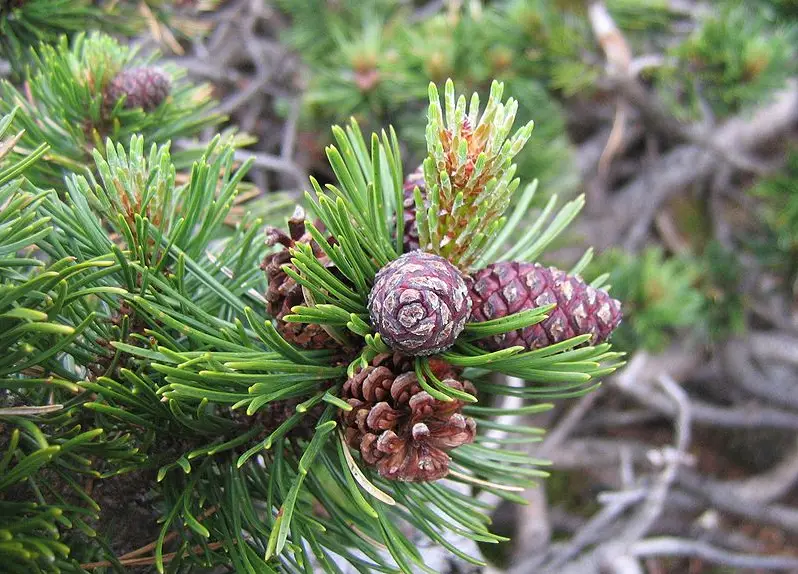
The Mugo Pine (Pinus mugo) produces cones from a dwarf pine that resembles a shrub. This compact pine is often cultivated in rockeries as an ornamental plant, with the dwarf variety growing only 3-6 feet (0.9-1.8 meters) tall, while the larger version reaches up to 10-25 feet (3-7.6 meters).
Native to European mountain ranges like the Pyrenees and Carpathians, the Mugo Pine thrives in low-growing forms with thick needles that protect it from chilling winds. The male cones stand upright like golden-yellow candles, whereas the female cones are dry, brown, and measure 1-2 inches (2.5-5 cm) long.
Pinyon Pine Cone
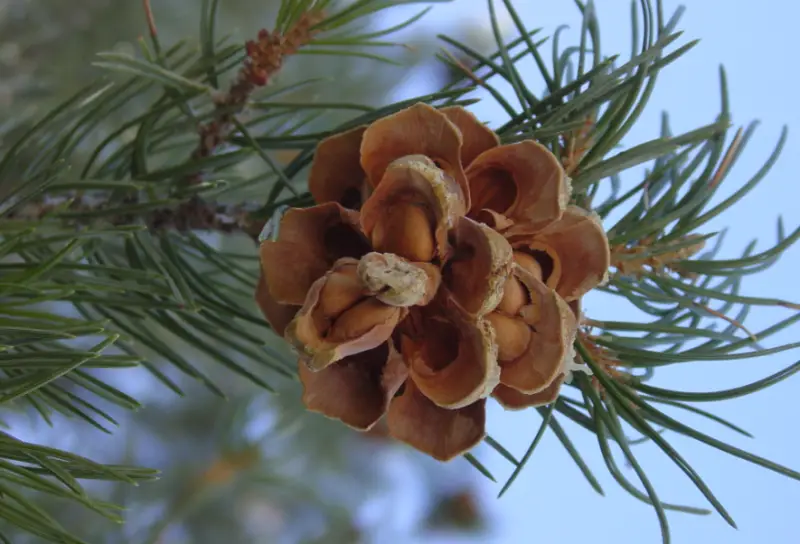
The Pinyon Pine (Pinus edulis) is known for its delectable seeds, which are highly valued in the Western and Central US and Mexico. These nuts are used in various culinary delights such as cakes, cookies, and even candles. They represent a significant commercial crop, ranking just behind pecans in value within the US.
Native Americans have traditionally enjoyed Pinyon Pine seeds, both raw and cooked. The tree itself emits a pleasant aromatic fragrance, making it a popular choice for Christmas trees and even for making incense from crushed cones.
Additionally, Native Americans use pitch glue from Pinyon Pine to waterproof baskets and secure jewelry, though its wood is not widely used for timber.
Pitch Pine Cones
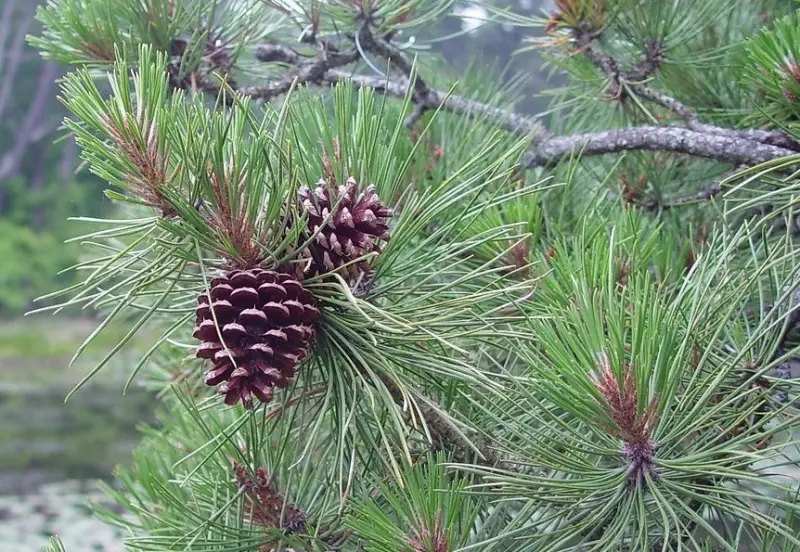
The Pitch Pine (Pinus rigida) is a North American tree renowned for its high pitch content, making it valuable as a building material. Its wood resists rot for extended periods, leading to its use in constructing radio towers, ships, and railroads. Pitch from this pine is also utilized in making glue, turpentine, and wound dressings due to its antifungal and antibacterial properties.
Native American Iroquois people used it for wound care, healing salves, and canoe construction. The tree’s female cones are medium-sized and brown. Pine pitch can be extracted and processed using various methods, such as a Swedish tar ditch kiln, to create useful products.
Lodgepole Pine
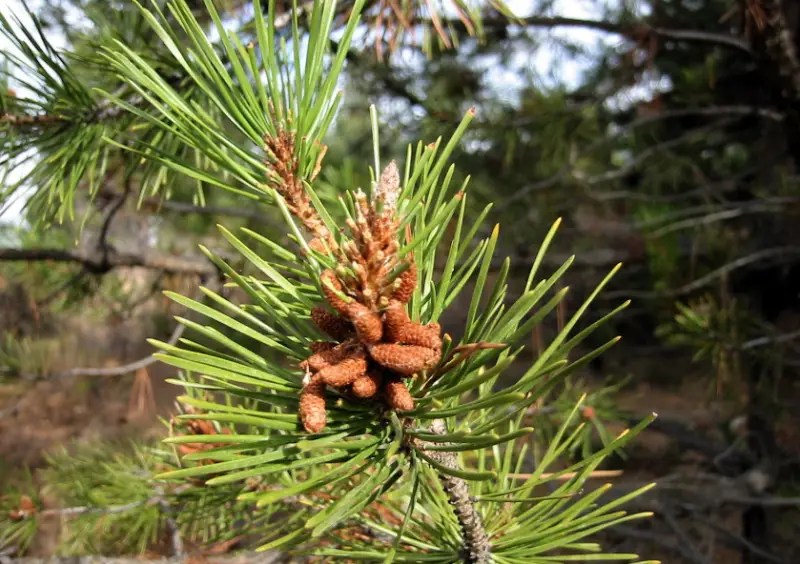
The Lodgepole Pine (Pinus contorta) is renowned for its exceptionally spiny pine cones, each scale adorned with fang-like spikes. The intensity of these spikes varies among the different types of Lodgepole Pines, which can have either round or spear-shaped cones.
Additionally, the tree’s needles are uniquely twisted as they grow. Like the Monterey Pine, the Lodgepole Pine benefits from fire; its cones are sealed with resin that requires intense heat to crack open and release the seeds. This adaptation helps the tree thrive in fire-prone environments, ensuring its continued growth and reproduction.
Monterey Pine Cones
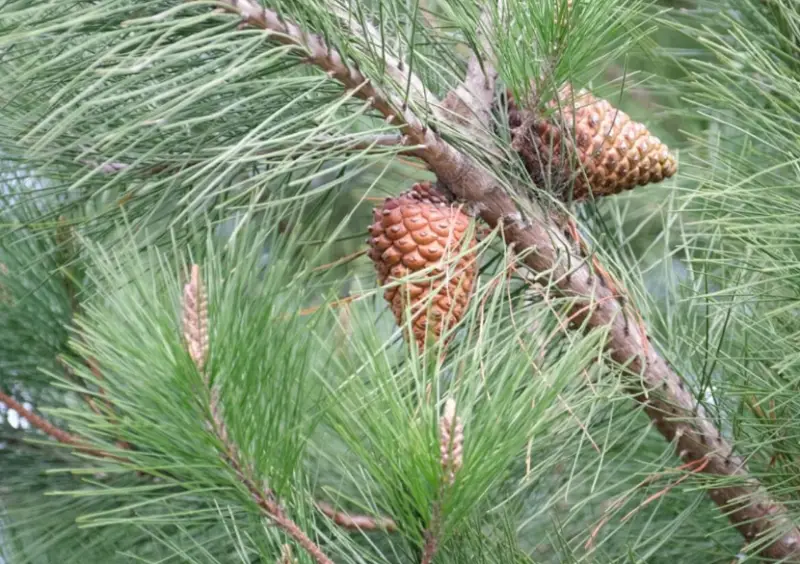
Monterey Pine Cones (Pinus radiata) are native to California and naturally grow in only five locations, although they have been planted in many places around the world.
The cones have adapted to open when exposed to heat from California’s frequent wildfires. This allows the seeds to be released into an environment where competing plants have been burned away, giving them a better chance of survival.
Each large cone can produce up to 200 seeds. I have tried eating them, but the seeds are quite small and tricky to collect. Despite this, the tree’s fire-adaptive trait ensures its continued success.
Coulter Pine Cones
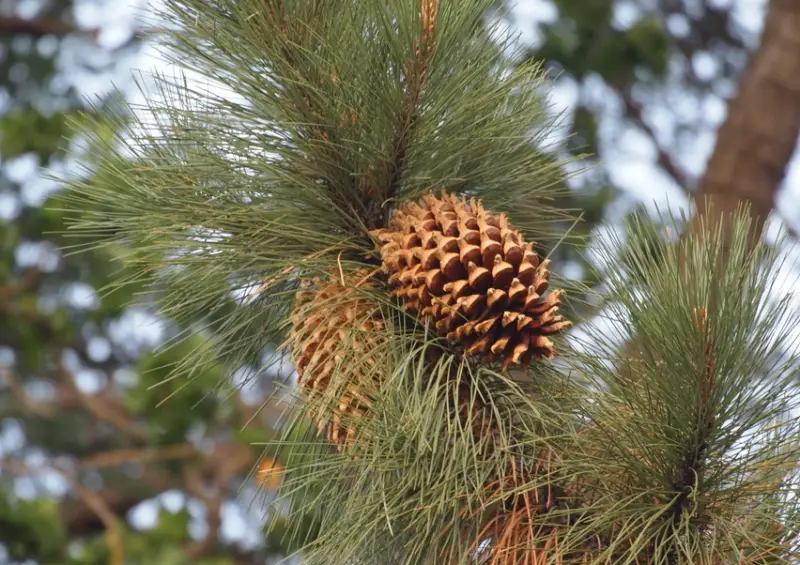
Coulter Pine Cones (Pinus coulteri) are the largest and heaviest pine cones in the world. The Coulter Pine is native to California and Mexico, where it grows in mountainous regions. These massive cones can weigh up to 5 kg (11 lb), making them a unique and striking feature of the tree.
Due to their weight, they have earned the nickname “widowmakers” because if one were to fall and hit someone on the head, it could cause serious injury or even death, potentially leaving their spouse a widow (or widower).
Eastern Hemlock

The Eastern Hemlock (Tsuga canadensis), also known as the Canadian Hemlock, features exceptionally tiny pine cones, measuring just ¾ inch (1.9 cm) in length. These cones begin as light green and gradually turn brown as they mature.
Despite their name, which reflects a scent reminiscent of the toxic Poison Hemlock plant, Eastern Hemlocks are not related to this poisonous species. The unique fragrance of the cones and their small size make the Eastern Hemlock a distinctive and intriguing tree in its native regions.
White Pine Cone
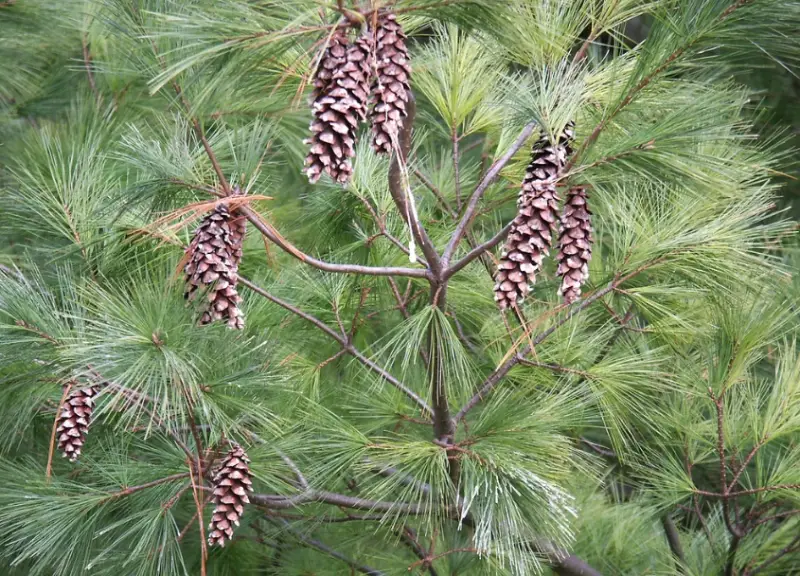
In Maine, the White Pine cone (Pinus strobus) is uniquely honored as the state flower, despite not being a flower at all. It stands out as the only state symbol of its kind. The White Pine is the largest conifer in Maine and the northeastern US, featuring thick tufts of long, bluish-green needles grouped in fives.
The pine cone itself is gracefully curved, measuring 4-5 inches (10 to 12 cm) long, and emits a pleasant fragrance. Its smooth, non-prickly scales add to its distinctive charm. This tree is prevalent throughout Maine and was historically used in shipbuilding for its tall, straight trunks.
Stone Pine Cone
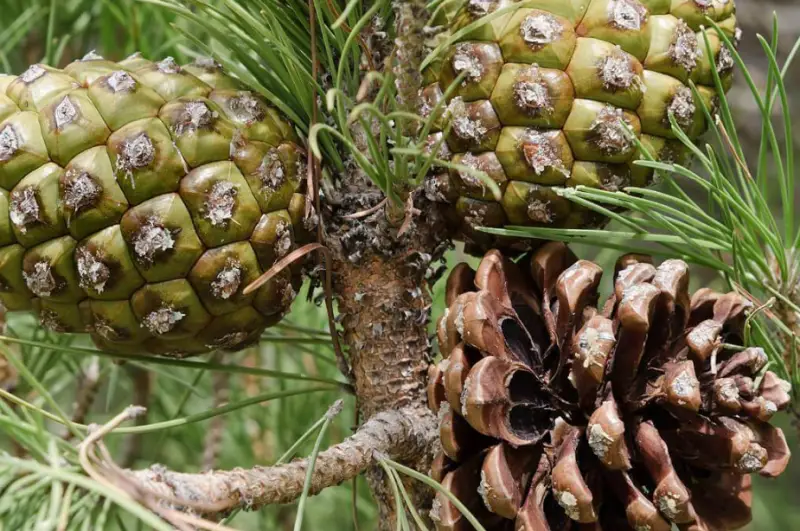
The Stone Pine (Pinus pinea), also known as the Umbrella Pine, is native to the Mediterranean regions and thrives in temperate and warm climates, as it only tolerates temperatures down to about -10°C. The cones of the Stone Pine are hand-sized, weighing between 250-350 grams (8.82-12.3 oz).
Renowned for its large, flavorful seeds, the Stone Pine is the source of the pine nuts commonly found in supermarkets and often used in pesto. This tree favors sandy soils, making it an ideal choice for windbreaks on sand dunes. Additionally, its resin is used to produce rosin, a substance applied to violin bow strings.
Japanese White Pine Cone
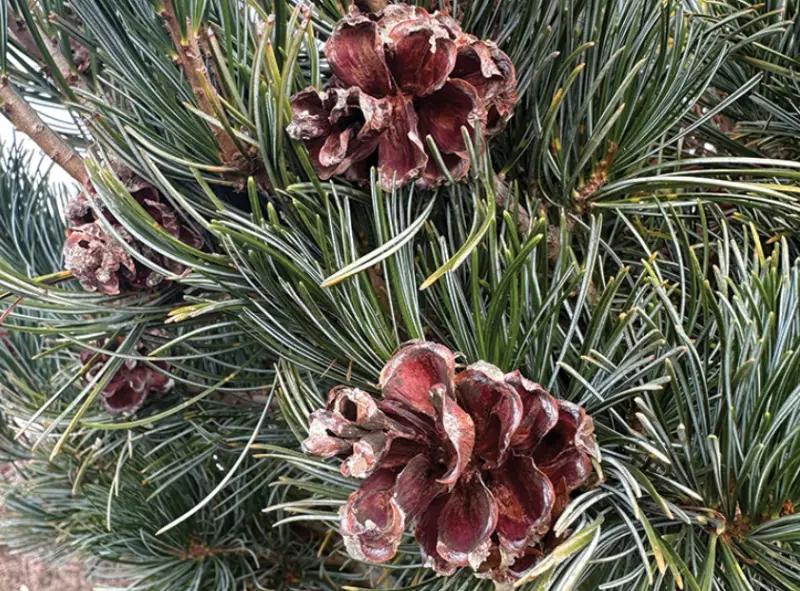
The Japanese White Pine (Pinus parviflora) is highly esteemed among bonsai enthusiasts for its suitability in creating miniature pine trees. Bonsai involves artfully controlling a tree’s growth to cultivate a tiny specimen that can be displayed in a tray.
The female cones of the Japanese White Pine are relatively small, measuring 6-8 cm (2.4-3.1 inches) and grow in clusters of up to 10 at the branch tips. In contrast, the male cones appear in larger clusters of about 30 higher up the branches. The tree features five needles per fascicle, which adds to its distinctive appearance and makes it ideal for the intricate art of bonsai.
Wollemi “Pine” Cone
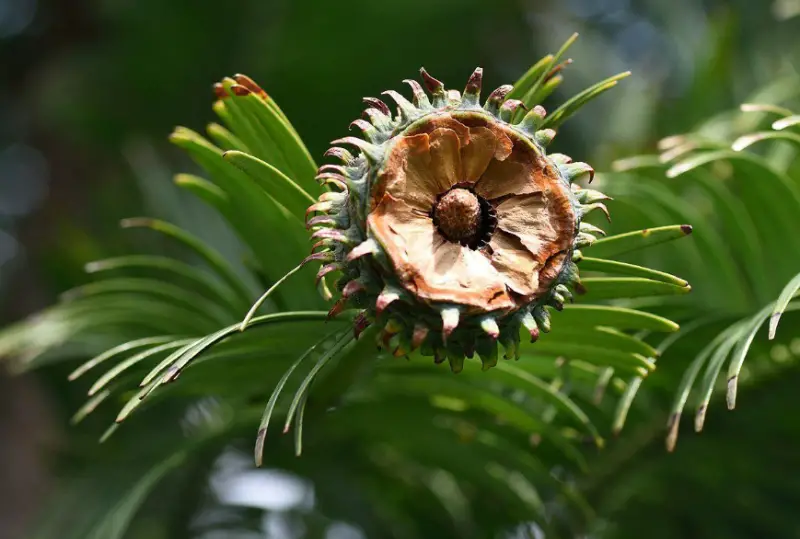
Despite its name, the Wollemi Pine (Wollemia nobilis) is not a true pine but is more closely related to the Araucaria family, which includes the Monkey Puzzle Tree. This ancient tree, part of the cone-bearing Gymnosperms, is incredibly rare, with only about 100 specimens remaining in the wild in Australia.
The Wollemi Pine dates back to the time of the dinosaurs, with fossils from 90 million years ago revealing its presence during the Jurassic period. The tree’s cones are small and appear at the tips of its feathery branches. The Wollemi Pine also has a protective white waxy coating on its buds, which helped it survive through many Ice Age winters.
Maritime Pine Cone
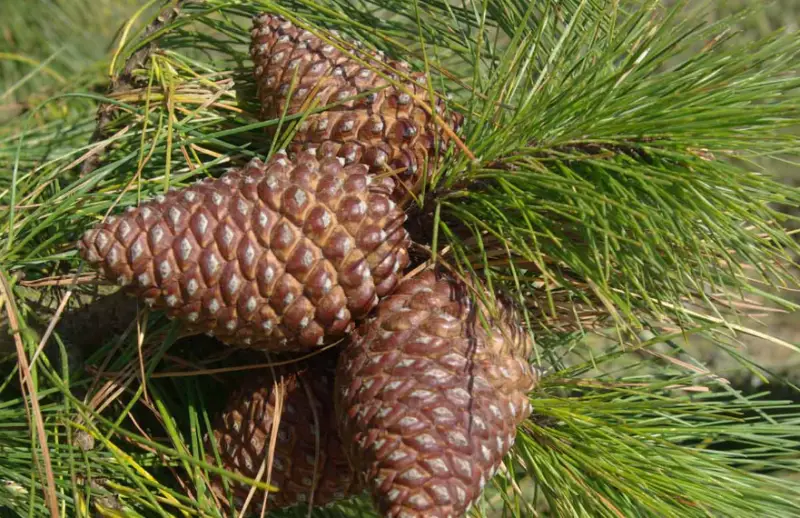
The Maritime Pine (Pinus pinaster) thrives along coastal areas and is well-suited to sandy soils, covering about 10% of France’s wooded regions. Known as the Golden Tree for its strength and resilience, it has light green needles that can withstand drought, storms, and salt spray, although it is less tolerant of frost.
The female cones of this pine take three years to mature, remaining on the tree for an extended period and gradually turning a shiny reddish-brown. Meanwhile, the male cones produce such abundant pollen that it is sometimes referred to as “sulfur rain.”
Mexican Weeping Pine Cone
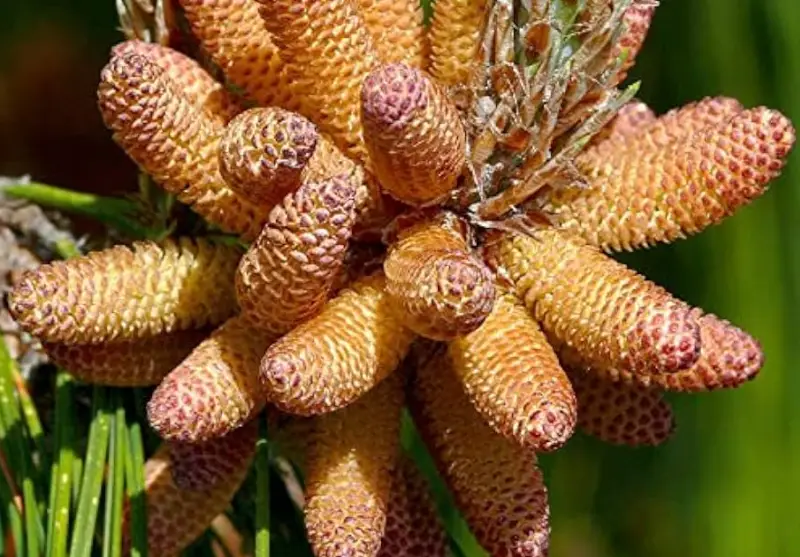
The Mexican Weeping Pine (Pinus patula), also known as the Patula Pine or Jellicote Pine, is distinguished by its long, drooping needles, which give it a “weeping” appearance. In Spanish, it’s called “pino triste,” meaning “sad pine.” The female cones cluster at the ends of the branches, with tips that protrude upright, while the male cones start pinkish-yellow and turn brown as they mature and release pollen.
This tree is valued in Mexico for its straight trunk, which is ideal for lumber. Its unique appearance and practical uses make it a notable species in South America.
Ponderosa Pine
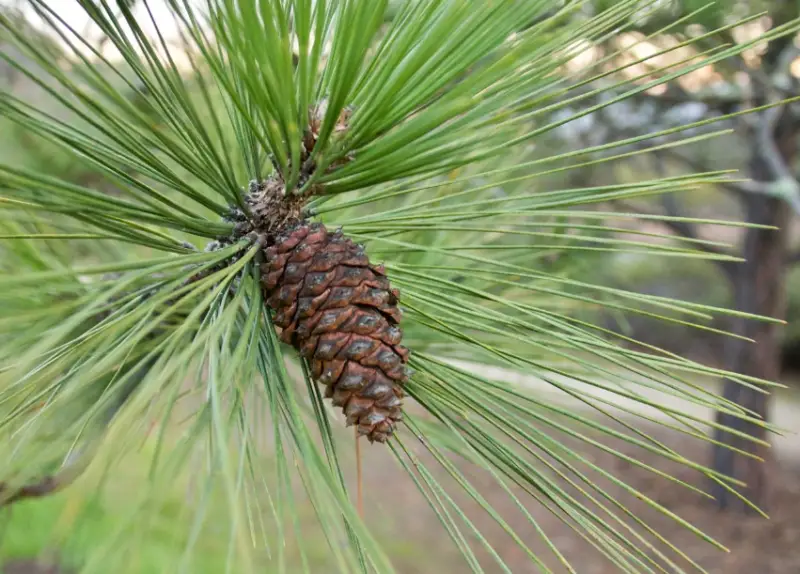
The Ponderosa Pine is known for its toxicity, containing isocupressic acid in its needles and outer bark, which can cause abortion in livestock, renal failure, and paralysis. This chemical is also present in common Juniper.
Despite this, Native Americans have historically consumed the seeds from Ponderosa Pine cones without adverse effects. Additionally, they used the heated needles to assist in delivering the placenta after childbirth and consumed the cambium layer—a thin, living tissue under the bark that transports nutrients.
Torrey Pine Cone
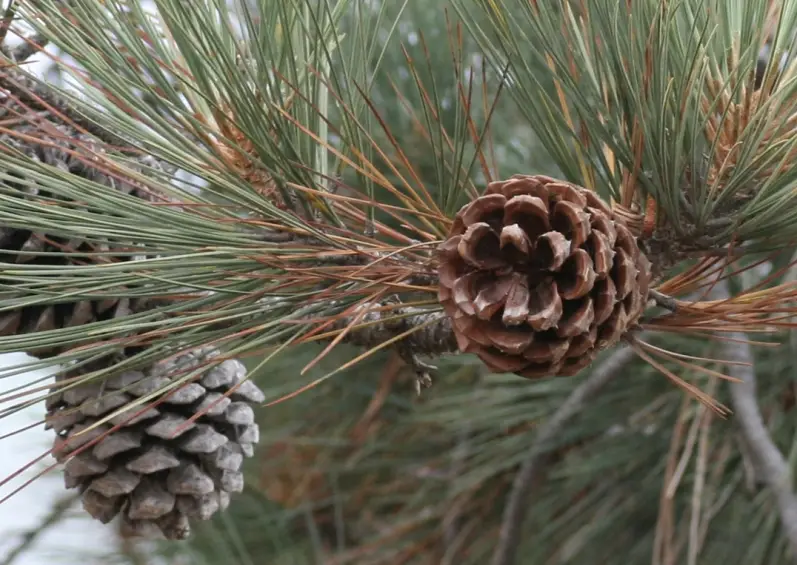
The Torrey Pine (Pinus torreyana) is critically endangered outside the US, making it one of the rarest pine trees in the country. Its nuts, known for their hard shells, require a nutcracker to open and are considered delicious, though they are only slightly larger than those from certain Pinyon Pines.
Torrey Pine cones can remain on the tree for up to 10 years, though they typically fall off by the third year. Some seeds may stay attached until the cone eventually drops.
With small wings, the seeds tend to fall straight down, often collected and buried by jays as winter food, allowing new trees to sprout from these forgotten caches.
Dalat White Pine Cone
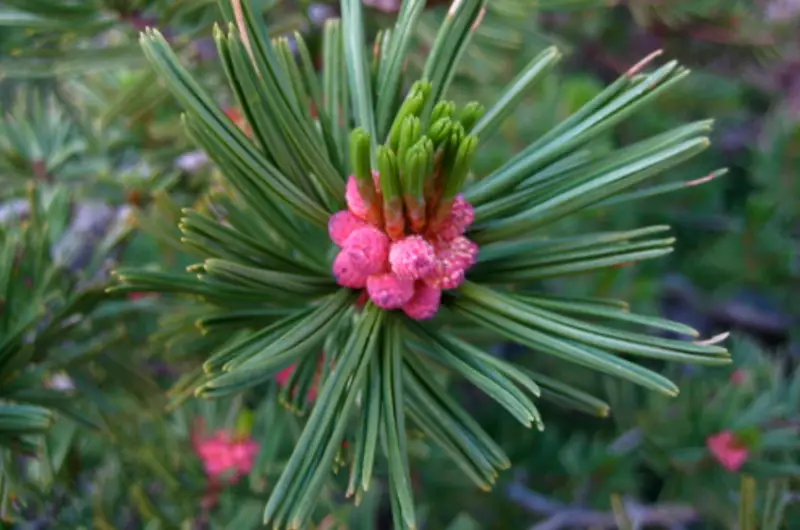
The Dalat White Pine (Pinus dalatensis) and the Maxipiñon Pine (Pinus maximartinezii) are among the rarest pine cones in the world. Native to Vietnam, the Dalat White Pine, locally known as “Thon Nam Da,” produces female cones that are light brown, 4.2-6.4 inches (10.5-16 cm) long, and taper towards the tip with thin, bendy, paddle-shaped seed scales.
The Maxipiñon Pine, discovered only about a decade ago when large seeds were found in a local market, is extremely rare and confined to a tiny area of 3-6 square miles (5-10 km²) in Mexico. Both pines are critically endangered and difficult to find.

